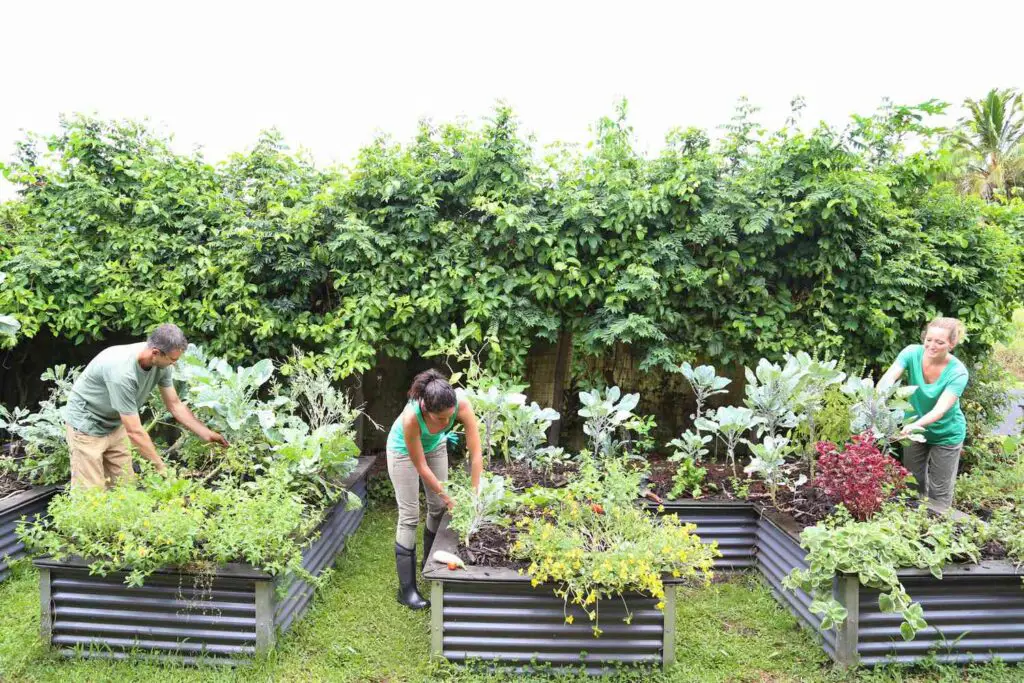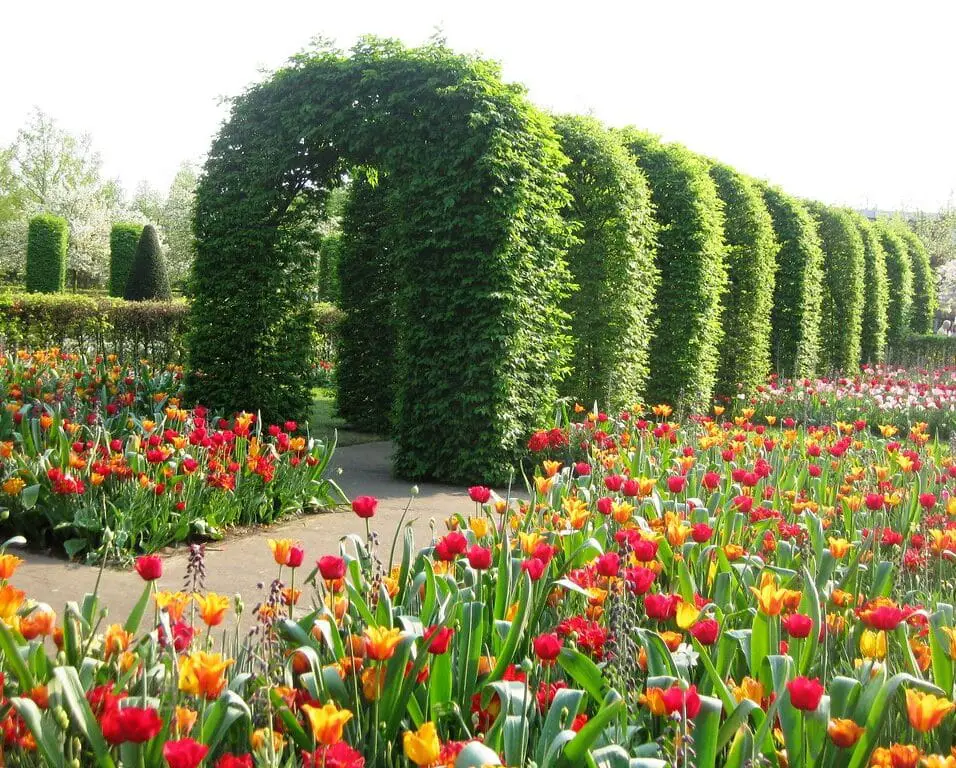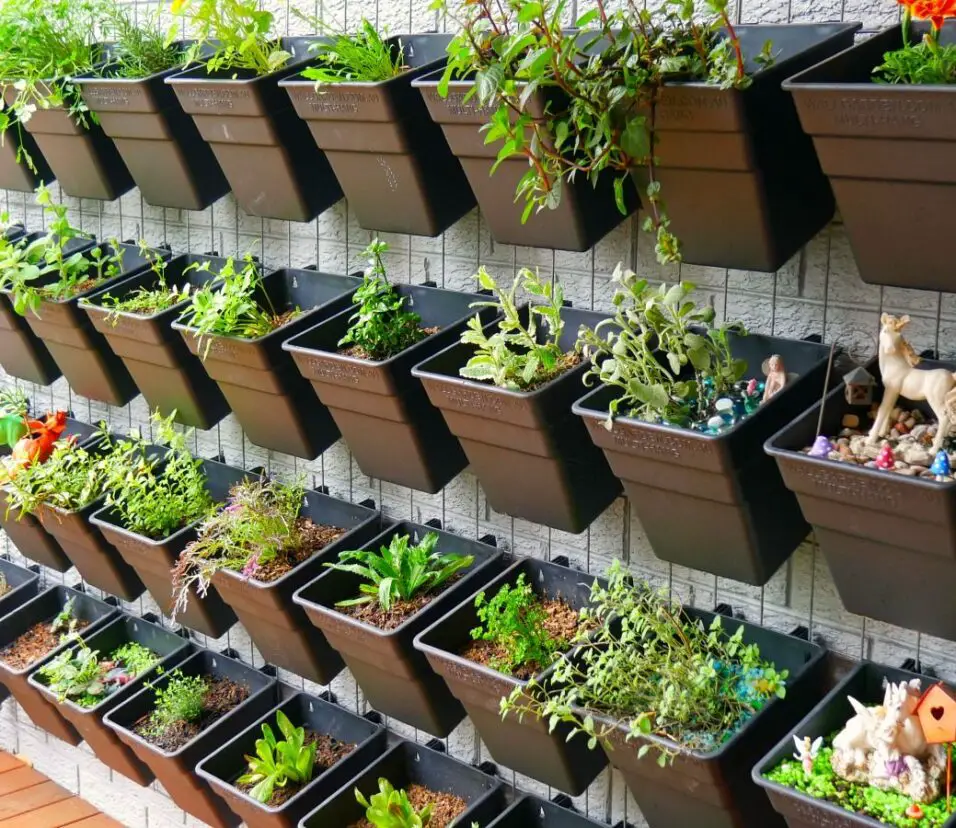Why Are Community Gardens Good
Introduction
Why Are Community Gardens Good: Community gardens have become increasingly popular in recent years, and for good reason. These shared spaces provide numerous benefits for individuals, neighborhoods, and the environment. From promoting healthy eating habits to fostering a sense of community, community gardens offer a range of advantages that make them an invaluable asset to any community.
One of the key benefits of community gardens is their ability to promote healthy eating habits. In a world where fast food and processed meals have become the norm, community gardens offer a refreshing alternative. By growing their own fruits, vegetables, and herbs, individuals have access to fresh, organic produce that is free from harmful pesticides and chemicals. This not only improves the nutritional value of their meals but also encourages them to incorporate more fruits and vegetables into their diet.
Furthermore, community gardens play a crucial role in fostering a sense of community. These shared spaces bring people together, regardless of age, background, or socioeconomic status. Gardening enthusiasts can exchange tips and advice, while beginners can learn from more experienced gardeners. This sense of camaraderie and collaboration creates a supportive environment where individuals can connect with one another, form friendships, and build a stronger community.
Additionally, community gardens safe have a positive impact on the environment. By growing their own food, individuals reduce their reliance on commercially produced crops, which often require large amounts of water, pesticides, and fossil fuels for transportation. Community gardens also contribute to the preservation of green spaces in urban areas, providing habitats for birds, insects, and other wildlife. Moreover, these gardens can help mitigate the effects of climate change by absorbing carbon dioxide and reducing the urban heat island effect.

Why are gardens important in cities?
Urban gardening can help reduce air pollution by removing carbon dioxide and other pollutants from the air while producing oxygen through photosynthesis. This process helps improve air quality in the urban environment and can even have a positive impact on public health.
Gardens play a crucial role in cities for several reasons.
These green spaces not only enhance the aesthetic appeal of the city but also contribute to the overall well-being of its residents.
Secondly, gardens in cities act as a sanctuary for wildlife and help to preserve biodiversity. As urbanization continues to encroach upon natural habitats, gardens provide a refuge for birds, insects, and other animals. They serve as important stepping stones for wildlife, allowing them to move between fragmented habitats and maintain genetic diversity.
Moreover, gardens in cities have a positive impact on the environment. They help to mitigate the urban heat island effect by providing shade and cooling the surrounding areas. Trees and plants in gardens also absorb carbon dioxide and release oxygen, improving air quality and reducing pollution levels. Additionally, gardens can act as natural water filters, reducing the risk of flooding by absorbing rainwater and preventing runoff.
Gardens are of utmost importance in cities due to their ability to provide green spaces, preserve biodiversity, mitigate environmental issues, and offer social benefits. It is crucial for urban planners and policymakers to prioritize the creation and maintenance of gardens in cities to ensure a sustainable and livable environment for current and future generations.
Why do people who live in cities like public gardens?
These contribute stress to their daily lives and so, a change of scene like those state-owned gardens in cities helps them get close to nature, breathe fresh air and more importantly make them get away from all kinds of stress that the city life has.
People who live in cities often have limited access to green spaces and natural environments. The hustle and bustle of city life can be overwhelming, and public gardens provide a much-needed escape from the concrete jungle. These green spaces offer a sanctuary where people can relax, unwind, and connect with nature.
One reason why people in cities like public gardens is the aesthetic appeal they offer
The beauty of well-maintained gardens can be a refreshing sight amidst the tall buildings and busy streets. The vibrant colors of flowers, the soothing sound of flowing water, and the lush greenery can provide a sense of tranquility and peace.
Public gardens also serve as a recreational space for city dwellers. They offer opportunities for various activities such as picnics, walks, and outdoor games. These gardens often have well-designed pathways, benches, and open spaces that encourage people to engage in physical activities and spend quality time with their friends and family.
Moreover, public gardens provide a platform for community engagement and social interaction. They serve as a meeting place for people from different walks of life, fostering a sense of belonging and unity. People can come together to participate in gardening workshops, cultural events, or simply have a conversation with fellow garden enthusiasts.
Another reason why people in cities like public gardens is the environmental benefits they offer. Green spaces help to improve air quality by absorbing pollutants and releasing oxygen. They also act as natural cooling systems, reducing the urban heat island effect. Public gardens contribute to the overall well-being of the city by providing a healthier and more sustainable environment.
Which city is known as garden city in world?
Detailed Solution. It has earned the title of the “”garden city”” due to its commitment to creating and preserving green spaces amidst its urban landscape.
One of the most famous gardens in Singapore is the Gardens by the Bay. This iconic attraction features futuristic Supertrees, which are vertical gardens that provide shade and support various plant species. The Gardens by the Bay also houses the Flower Dome, the largest glass greenhouse in the world, and the Cloud Forest, a mist-filled conservatory showcasing a diverse range of plants from tropical highlands.
In addition to the Gardens by the Bay, Singapore is home to numerous other parks and gardens that contribute to its reputation as a garden city. The Singapore Botanic Gardens, a UNESCO World Heritage Site, is a popular destination for both locals and tourists. It boasts a wide variety of flora and fauna, including a stunning orchid garden.
Singapore’s commitment to green spaces extends beyond its public parks and gardens. The city-state has implemented strict regulations to ensure that new developments incorporate greenery into their designs. This includes requirements for developers to include rooftop gardens, vertical green walls, and sky terraces in their buildings.
Overall, Singapore’s dedication to creating and maintaining green spaces has earned it the well-deserved title of the “”garden city.”” Its commitment to preserving nature amidst its urban environment serves as an inspiration for other cities around the world.
What are the characteristics of a Garden City?
What is a Garden City?
- Strong vision, leadership and community engagement.
- Land value capture for the benefit of the community.
- Community ownership of land and long-term stewardship of assets.
- Mixed-tenure homes and housing types that are affordable for ordinary people.
A Garden City is a planned community that incorporates green spaces, parks, and gardens into its design. It is characterized by its emphasis on nature, sustainability, and quality of life for its residents. Garden Cities are often seen as a response to the negative effects of urbanization, such as pollution, overcrowding, and lack of green spaces.
Green Spaces in Garden Cities: Striking a Balance Between Urban and Natural Environments
One of the key characteristics of a Garden City is the presence of abundant green spaces. These can include parks, gardens, and even agricultural areas. The idea is to create a balance between urban development and nature, providing residents with access to greenery and open spaces. This not only improves the aesthetic appeal of the city but also has numerous health and environmental benefits.
Another important characteristic of a Garden City is its focus on sustainability. This includes sustainable transportation options, such as pedestrian-friendly streets, cycling lanes, and efficient public transportation systems. Garden Cities also prioritize energy efficiency and waste management, aiming to reduce their carbon footprint and promote a greener way of living.
Garden Cities are designed with the well-being of their residents in mind. They often have a strong sense of community, with amenities such as community centers, schools, and healthcare facilities easily accessible to all residents. The layout of the city is carefully planned to promote social interaction and a high quality of life.
Garden City is characterized by its incorporation of green spaces, sustainability, and a focus on the well-being of its residents. These cities aim to create a harmonious balance between urban development and nature, providing a high quality of life for their residents while minimizing the negative impacts of urbanization.”
Which city is known as the Garden City and why?
Bangalore is called the Garden City of India. This is because of Hyder Ali, the ruler of Mysore, liked the cool climate of Bangalore and so planned a garden that was named as Lalbagh.
Bengaluru, also known as Bangalore, is the city that is famously known as the Garden City. This title is attributed to the city due to its numerous parks and gardens that are spread across its landscape. Bengaluru is located in the southern part of India and is the capital city of the state of Karnataka. It is one of the fastest-growing cities in the country and is renowned for its pleasant climate and greenery.
The city’s reputation as the Garden City can be traced back to its colonial past. During the British rule in India, Bengaluru was developed as a cantonment town. The British officials and residents of the city took great efforts to create a green and serene environment. They established several parks and gardens, which were meticulously maintained and became an integral part of the city’s identity.
Bengaluru’s pleasant climate also contributes to its reputation as the Garden City. The city enjoys a moderate climate throughout the year, with temperatures rarely exceeding 35 degrees Celsius. The cool and pleasant weather makes it conducive for the growth of a wide variety of plants and trees. The city’s parks and gardens are adorned with lush greenery, colorful flowers, and towering trees.
Providing a refreshing and soothing environment for its residents and visitors.
One of the most famous parks in Bengaluru is the Lalbagh Botanical Garden. Spread over 240 acres, it is home to a diverse collection of plants and trees, including rare species. The park also houses the famous Glass House, which hosts an annual flower show that attracts thousands of visitors. Another prominent garden in the city is Cubbon Park, which spans over 300 acres and is a popular recreational spot for locals.
In addition to these well-known parks, Bengaluru is dotted with numerous smaller gardens and green spaces. These include the Jayaprakash Narayan Biodiversity Park, Indira Gandhi Musical Fountain Park, and the Bannerghatta Biological Park, among others. The city’s commitment to preserving its green spaces and promoting environmental sustainability has earned it the title of the Garden City.
Community gardens offer a multitude of benefits for individuals, neighborhoods, and the environment. Firstly, they provide a space for people to connect with nature and engage in physical activity. Gardening has been proven to reduce stress, improve mental health, and increase overall well-being. By spending time outdoors and getting their hands dirty, individuals can reap the physical and mental health benefits that come with gardening.
Additionally, community gardens contribute to food security and access to fresh, nutritious produce. In many urban areas, access to affordable and healthy food is limited. Community gardens help address this issue by providing a source of fresh fruits and vegetables for community members. This is particularly important for low-income neighborhoods where access to nutritious food is often scarce.
How do community gardens contribute to the well-being of a community?
Community gardens play a crucial role in enhancing the overall well-being of a community in several ways. Firstly, these gardens provide a space for individuals to engage in physical activity, which is essential for maintaining good health. Gardening activities such as planting, weeding, and harvesting require physical exertion, helping community members stay active and fit. This contributes to reducing the risk of various health issues, including obesity, heart disease, and diabetes.
Moreover, community gardens also have a positive impact on mental well-being. Spending time in nature and engaging in gardening activities has been proven to reduce stress, anxiety, and depression. The act of nurturing plants and watching them grow can be therapeutic, providing a sense of purpose and accomplishment. Additionally, community gardens often serve as a gathering place for neighbors, fostering social connections and a sense of belonging, which are crucial for overall well-being.
In what ways do community gardens promote sustainability?
Community gardens promote sustainability in several ways. Firstly, they contribute to local food production, reducing the need for long-distance transportation and the associated carbon emissions. By growing their own fruits and vegetables, community gardeners reduce their reliance on commercially produced food, which often requires large amounts of energy for processing and packaging. This localized food production also helps to preserve biodiversity by promoting the cultivation of heirloom and indigenous plant varieties.
Secondly, community gardens promote sustainable land use. Many community gardens are established on vacant or underutilized land, transforming these spaces into productive and vibrant green areas. By repurposing these spaces, community gardens help to combat urban sprawl and preserve valuable green spaces within cities. Additionally, community gardens often employ sustainable gardening practices, such as composting, organic pest control, and water conservation techniques, which minimize the use of harmful chemicals and reduce water waste.
What role do community gardens play in fostering social connections and community engagement?
Community gardens play a crucial role in fostering social connections and community engagement. These gardens provide a shared space where people from diverse backgrounds can come together, interact, and collaborate. By working side by side in the garden, individuals have the opportunity to build relationships, share knowledge, and learn from one another. This sense of community and connection helps to strengthen social bonds and create a sense of belonging among participants.
Community gardens often organize various events and activities that encourage community engagement. These can include workshops on gardening techniques, cooking classes using produce from the garden, or even community gatherings and celebrations. These events not only bring people together but also provide opportunities for individuals to contribute their skills and talents, fostering a sense of ownership and pride in the garden and the wider community.
Can you provide examples of successful community garden initiatives and their impact on local communities?
Yes, there are numerous examples of successful community garden initiatives that have had a significant impact on local communities. One such example is the “”XYZ Community Garden”” located in a low-income neighborhood. The garden not only succeeded in achieving this goal but also became a hub for community engagement and education. Residents came together to cultivate the garden, share gardening tips, and learn about sustainable farming practices. The garden not only provided nutritious food but also served as a platform for social interaction and skill-building.
Another example is the “”ABC Urban Farm”” located in a densely populated urban area. This community garden initiative transformed an abandoned lot into a thriving green space. The farm not only produced fresh fruits and vegetables but also created job opportunities for local residents. The surplus produce was sold at affordable prices, making healthy food accessible to all. Additionally, the farm organized workshops and training programs on urban farming, empowering individuals to grow their own food and contribute to a more sustainable community. The impact of this initiative extended beyond the immediate neighborhood, inspiring other communities to start similar projects and promoting the idea of urban agriculture as a viable solution to food insecurity.

Conclusion
Community gardens are a valuable asset to any neighborhood, providing numerous benefits to both individuals and the community as a whole. These gardens offer a space for people to come together, connect with nature, and cultivate their own food. They promote a sense of community and belonging, fostering social interactions and relationships among neighbors. Additionally, community gardens contribute to environmental sustainability by promoting organic gardening practices and reducing food miles.
One of the key advantages of community gardens is their ability to bring people together. These gardens serve as a gathering place where individuals from diverse backgrounds can come together and work towards a common goal. Gardening activities provide opportunities for people to interact, share knowledge, and learn from one another. This sense of community and collaboration helps to strengthen social bonds and create a sense of belonging among neighbors.
Community gardens offer individuals the chance to reconnect with nature. In today’s fast-paced and urbanized world, many people have become disconnected from the natural environment. Community gardens safe provide a space where individuals can engage in gardening activities, connect with the earth, and experience the therapeutic benefits of being in nature. Gardening has been shown to reduce stress, improve mental well-being, and promote physical health.








